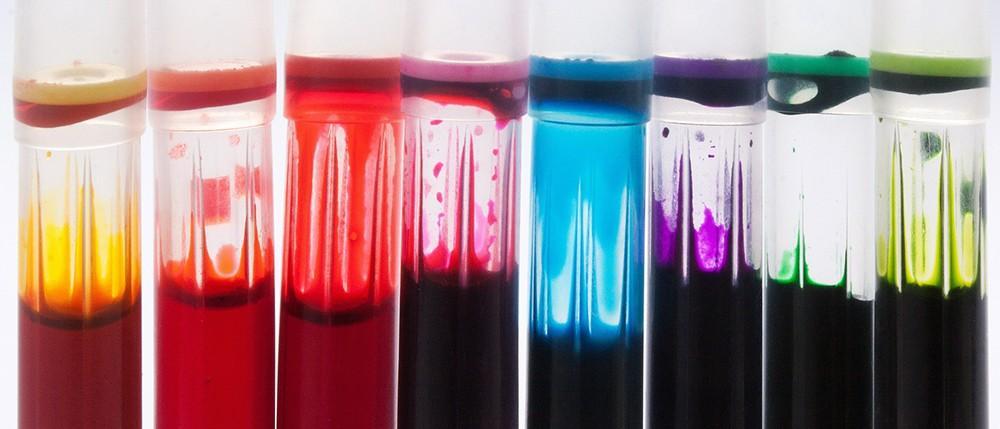Water-based ink pigments are integral to modern printing technologies, offering a blend of vibrant color, environmental sustainability, and versatility across various applications. This guide delves into the fundamentals of water-based ink pigments, exploring their composition, types, production processes, advantages, and key considerations for selection.
What Are Water-Based Ink Pigments?
Water-based ink pigments are finely ground, insoluble colorants suspended in a water-based medium. Unlike dyes, which dissolve in the solvent, pigments remain as discrete particles, providing superior lightfastness and durability. These pigments are essential in various printing applications, including packaging, textiles, and publications, due to their vibrant colors and environmental benefits.
What Are Water-Based Ink Pigments?
Water-based ink pigments are finely ground, insoluble colorants suspended in a water-based medium. Unlike dyes, which dissolve in the solvent, pigments remain as discrete particles, providing superior lightfastness and durability. These pigments are essential in various printing applications, including packaging, textiles, and publications, due to their vibrant colors and environmental benefits.
Components of Water-Based Inks
A standard water-based ink consists of several key components:
- Pigments: The color-imparting agents that determine the final hue and opacity.
- Binders: Usually acrylic or polyurethane-based resins that ensure the pigment adheres to the substrate.
- Additives: These include dispersants, defoamers, pH stabilizers, and drying agents to optimize ink behavior.
- Carrier Solvent: Mainly water, which acts as the main vehicle for pigment dispersion and application.
- This formulation creates a stable and effective ink system with minimal environmental impact.
Classification of Pigments
Pigments used in water-based inks are broadly categorized into organic and inorganic types:
- Organic Pigments: These carbon-based pigments offer bright, vibrant colors and excellent transparency. Common examples include phthalocyanine blues and greens, as well as quinacridones and diarylides for reds and yellows. Organic pigments are especially favored in packaging and advertising materials where visual impact is critical.
- Inorganic Pigments: These are mineral-based pigments like titanium dioxide (white), iron oxides (reds and browns), and carbon black (black). They are known for their durability, high opacity, and excellent resistance to heat and chemicals.
The choice between organic and inorganic pigments depends on the specific performance and cost requirements of the application.
Production Process
The manufacture of water-based ink pigments involves multiple technical steps to ensure particle consistency, dispersion, and performance:
- Pre-Mixing: Pigments are mixed with water and dispersants to form a slurry.
- Grinding/Dispersion: The slurry is passed through high-speed mixers or bead mills to break down particle clusters and ensure even distribution.
- Stabilization: Additives are introduced to prevent re-agglomeration and stabilize the dispersion.
- Formulation: The pigment dispersion is blended with binders and additional additives to create a complete ink system.
- Filtration and Quality Control: Final inks are filtered and tested for parameters such as color strength, viscosity, pH, and stability.
This process ensures that the inks meet the demands of modern high-speed printing equipment.
Benefits of Water-Based Ink Pigments
There are several reasons why industries are switching to water-based ink pigments:
- Eco-Friendly: They contain low or zero volatile organic compounds (VOCs), making them safer for workers and reducing environmental emissions.
- Cost-Effective: While the initial cost of formulation may be higher, savings come from lower regulatory compliance costs and safer handling.
- Vibrant Color Reproduction: High-quality pigments deliver strong color intensity and accurate color matching.
- Good Print Durability: Properly formulated inks offer excellent resistance to fading, smudging, and abrasion.
- Substrate Versatility: Suitable for printing on paper, cardboard, films, textiles, and even biodegradable materials.
Key Performance Indicators in Pigment Selection
When selecting pigments for a water-based ink formulation, several performance attributes must be considered:
- Color Strength: Determines how much pigment is needed to achieve a specific tone.
- Lightfastness: Indicates how well the pigment resists fading when exposed to light.
- Chemical Resistance: Important for applications exposed to moisture, oils, or cleaning agents.
- Particle Size Distribution: Affects print sharpness, viscosity, and sedimentation.
- Compatibility: Pigments must work well with binders and additives in the ink system.
Accurate pigment selection ensures consistent printing performance and extends product lifespan.
Applications of Water-Based Ink Pigments
Due to their versatility and environmental safety, water-based ink pigments are widely used across various industries:
- Packaging: Flexographic and gravure printing on paperboard, corrugated boxes, and flexible films.
- Textiles: Direct-to-garment (DTG) printing and roll-to-roll printing on cotton, polyester, and blends.
- Publishing: High-speed inkjet printing for books, newspapers, and educational materials.
- Labels and Tags: Producing vibrant, durable prints for consumer goods, logistics, and retail.
- Stationery and Art Supplies: Used in markers, highlighters, and water-based pens.
Final Thoughts
Water-based ink pigments represent a smart and sustainable solution for today’s printing needs. As global industries push for greener practices without sacrificing quality, these pigments deliver performance, safety, and color brilliance. Understanding their chemistry and function allows manufacturers and brand owners to make informed decisions, ensuring optimal results in both aesthetics and environmental impact.








